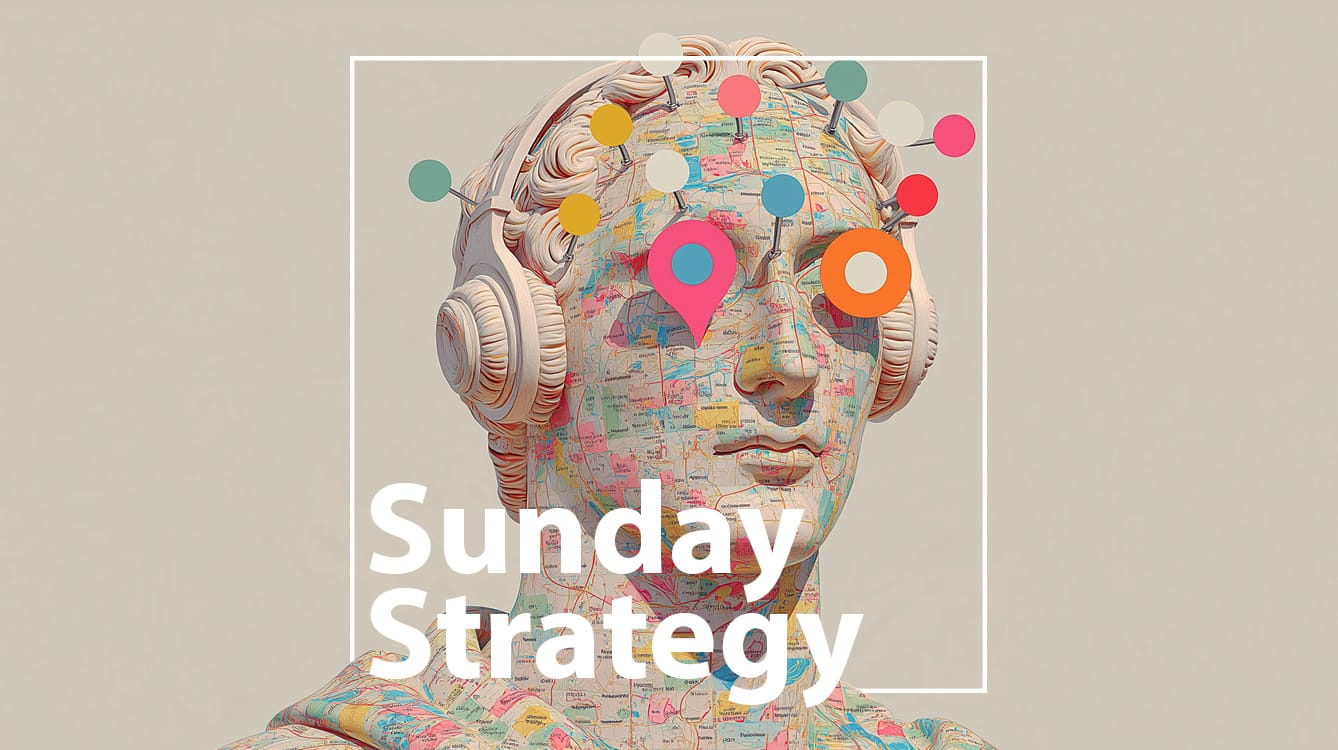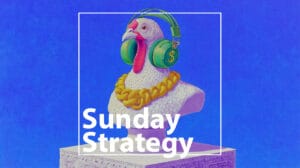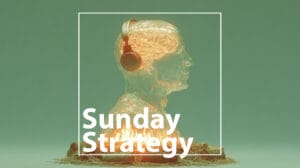In this issue of Sunday Strategy, we look at five stories to think about next week, including: Instagram’s Location Sharing Outrage, A Requiem for an AI Model, Restaurants Shrink on Ozempic, Normal Vacations in Economic Crisis and the Worry About News on TikTok.
In addition, we have ads from: Columbia, Coinbase, Walkers and Vola.
// Stories of the Week:
1.) It’s not Location Sharing, It’s Instagram Location Sharing.
Instagram has announced a raft of updates this week that may have you mistaking it for other social networks. From the ability to repost images (ala retweets and reshares) to a friend map (ala Snap Map), the social network has leveraged a range of competitor features.
However, when it comes to location sharing, it may find that a similar experience to Snapchat may have a very different user reaction. User outrage over location sharing has been swift since the feature’s launch, with users sharing urgent alerts to disable the feature and prompting legislative calls to regulate its access to under 18s in the US. Despite the fact that location sharing has been on Snapchat since 2017 and 45% of users reportedly engage with it regularly, often seeing it as a step in friendship and digital intimacy – Instagram’s entry into the space has been received differently.
The outrage may stem from how the feature was rolled out and who its coming from. Those who want a location sharing feature already have one from a range of other platforms, so without a burning need – all users are seeing is risk. Additionally, Meta’s credentials on privacy and user relationships are mixed – leaving a distrustful user base to quickly reconcile a new feature. Location sharing use has been shown to be tied to core groups vs. everyone.
Meta itself spent much of this week explaining why it did what it did and reminding users that just because they appear on its map, it doesn’t mean others can see them. The controversy and confusion may highlight the risk in a copycat feature strategy, with similar features getting different responses when Meta introduces them in a different time and context than competitors.
2.) Requiem for an AI Model I Once Loved.
As AI models begin to form deeper and deeper relationships with users, serving as everything from assistant to life coach, what happens when those models upgrade and change?
The release of OpenAI’s GPT5 gives us insight into the unintended consequences of model shifts, as many users have taken online to complain about the change in tone and interaction that came with the new model. So many missed GPT 4’s tone and behavior that OpenAI has moved away from its original strategy of full model unification and offered users a setting to go back to legacy models.
While the shift may seem trivial, it highlights a deeper tension that exists in software that creates deeper human relationships. While we can complain about changes to iOS or Windows, it hasn’t had a similar visceral impact for many. In fact, Claude users in LA just held a ‘funeral’ for a depreciated model. As many of us make AI into ‘more than software’, what does it mean for how upgrading works? Are we losing a friend as much as changing versions?
3.) What Happens When Restaurants Go on Ozempic.
There is no doubt that the modern relationship with food has shifted in novel ways. From social media’s creation of stunt products, built more for photography than consumption (spending this week in the UK won’t be complete without the M&S Birthday Cake sandwich), to modern health’s fixation with protein – how we think of food is constantly changing. Nothing is changing it more perhaps, than Ozempic.
As GLP-1s grow in popularity and change our appetites and relationships with food, they are also changing how restaurants serve us. In response to growing GLP-1 use, the NYT recently documented restaurants that are cutting down portion sizes, potentially gleeful to have a reason to shrink costs aside from the economy. While many are responding to Ozempic implicitly, how long until restaurants go the way of diet meals and explicitly tackle the Ozempic elephant in the room?
4.) A Normal Vacation In This Economy?
Despite economic uncertainty, holidays look as popular as the Jet2 sound on TikTok. However, while many are still going on vacation, economic pressure is changing how they plan and choose a holiday.
Holidays have always been a mixture of risk and uniqueness. We all say we want to go to different places and have a unique experience, but we often go to the same places to do so. This tension, arguably at the heart of theme park holiday success, has led many to seek out new types of risk free holiday adventure in the form of music festivals.
As international travel to UK music festivals increases, tours become destinations and package holidays upgrade to provide a safe, but social media friendly, experience – travellers are increasingly looking for new ‘beaten’ paths. Destinations branded on shared experiences (the Vegas weekend of casinos and the pool) may have to consider how to offer a unique adventure at the heart of a trip to continue to peak the interest of travellers seeking out more individual stories on less money and risk.
5.) Good Evening, This is the News on TikTok
News is increasingly finding us in social media, vs. people seeking out news. With 39% of Under 30s getting news from TikTok (and 17% overall), there is a growing amount of the population that lets the ‘information flow over them’ as the Atlantic puts it in a recent piece. With little content being searched, news influencers of various approaches and philosophies are informing the world view of users, but what’s the cost?
While we can view TikTok news as the logical evolution of a 24 hour news cycle that had to buttress pure fact with editorial to fill the day and engage, TikTok influencers are often mixing personal approach with breaking news – serving up hot takes faster than other sources, but with the risk of misinformation. As trust in the mainstream media continues to decline, users are left on their own to cobble together an increasingly varied diet of primary and second hand editorial news sources. With an algorithm that personalizes effectively, is social news fuelling the bubble of our own worldview or is it just an answer to more one to many style editorial from TV journalism?
// Ads You Might Have Missed:
1.) ‘Engineered for Whatever’ – Columbia:
Outdoor brand Columbia’s latest campaign says something we all implicitly know – the outdoors are beautiful, but they can be pretty scary. Evolving the traditional rugged outdoor gear message beyond blizzards and cold, Columbia takes a mixed media approach that features everything from Yetis to sawing your own arm off to remind us that nature is ready to throw everything at you, and a lot of it is really really scary.
While it’s surprising to see an outdoor brand say how terrifying the outdoors can be, Columbia is seemingly betting that most of its audience knows the tradeoff. When everyone else is showing a variation of El Capitan at sunrise, a brand has the latitude to get extreme and funny in other directions.
2.) ‘Jheze & Onion’ – Walkers:
How nostalgic can an ad be about another ad? With 90s nostalgia in full swing and many younger consumers pining for a time they didn’t live in or exactly remember – Walkers has unexpectedly created a crisp ad that pays homage to a classic 90s Budweiser ad. ‘Jheze and Onion’ borrows the setup, and landline phones, of classic 90’s Budweiser ad ‘Whassup’ – changing the classic line for ‘Jheeze’ between friends. Is knowledge of the original ad required to appreciate this or can a loose understanding of a cultural meme translate into something new?
3.) ‘Everything is Just Fine’ – Coinbase:
What happens when musicals turn mean? Crypto brand Coinbase’s latest UK ad is a musical provocation towards the complacency of the UK public in a way that’s certainly memorable, but risky. ‘Everything is Just Fine’ features jabs at this green and pleasant land, from grocery inflation to dirty streets and failing law degrees. It may be right about some of these things, but is Coinbase the brand to say it? Just because you have your finger on the worries of the nation, might not give you the license to say it out loud.
Musical ads cover a lot of sins when used effectively, from Fiverr’s musicals about modern work to a perennial favorite, The Sydney Opera House’s 50th anniversary song featuring Tim Minchin, which tears into many of the historical complaints it received when being created. Music, like humor, can make uncomfortable truths palatable, but if a brand goes too far – does someone decide to hang the DJ? Coinbase aims to motivate through anger, driving people to change finances as they change society – but does the effort come across more Le Murder than Le Miserables?
4.) ‘Higher Standards’ – Vola:
We often take context for granted when it comes to our expectations. What we will accept from our dentist, dry cleaner and doctor varies wildly. But what about our airline?
Airline Vola’s latest campaign slyly plays with context, asking if we would accept other professionals in our life behaving like airlines do? If our doctor charged us for not printing out an appointment confirmation or charged for a waiting room seat, we’d be outraged – despite both being a common occurrence when flying. In a market where many brands overcommit or over claim, Vola reframes expectations in a way that gets flyers asking questions about why they accept what they do.
// Sunday Snippets
// Marketing & Advertising //
// Mastercard sponsor Llanfairpwllgwyngyllgogerychwyrndrobwllllantysiliogogogoch FC, a non-league team with the longest town name [Sports]
// Amongst new leadership and consolidation, WPP publishes their vision of the ‘AI Empowered Agency’ [Agencies]
// Greggs and KFC served up the superhero crossover we’ve all be waiting for (and cardiologists have feared) – gravy covered sausage rolls [Food]
// Frida and ice creamery Odd Fellows have launched a breast milk ice cream (synthetically flavoured to taste like it’s from breast milk) in Brooklyn [Food]
// Time ranks America’s best mid sized companies of 2025 [Research]
// Technology & Media //
// He’s all over social media, but who is the ‘Ibiza Final Boss’? [Culture]
// The influencer driving Nantucket crazy this summer [Social Media]
// How kids see a phone free childhood [Technology]
// Life & Culture //
// Welcome to the end of the ‘summer of the crash out’ [Culture]
// Is Tinder Leave something more companies should offer? [Work]
// 10 things a Vice Journalist learned going sober to a music festival [Music]
// Has America gone from ‘Anti-intellectual’ to ‘Anti-intellect’? [Culture]
// As sorority rush begins in the US on college campuses and TikTok, The Cut looks at the industrial complex behind it [Culture]
// Are Oasis the ‘Last Hurrah’ or ‘Resurgence’ of stadium rock tours? [Music]
// As fans throw s*x toys on the court at WNBA games, whats behind it and what does it say about how we view women’s sports [Sports]
// Inside the world of professional back scratching [Culture]
// What the MLB can learn from the Savannah Bananas [Sports]
// Until Next Sunday
As always, let me know what you think by email (dubose@newclassic.agency), website or on LinkedIn.
You can also listen to an audio summary and discussion of each week’s newsletter on Spotify. We’re also on TikTok!





